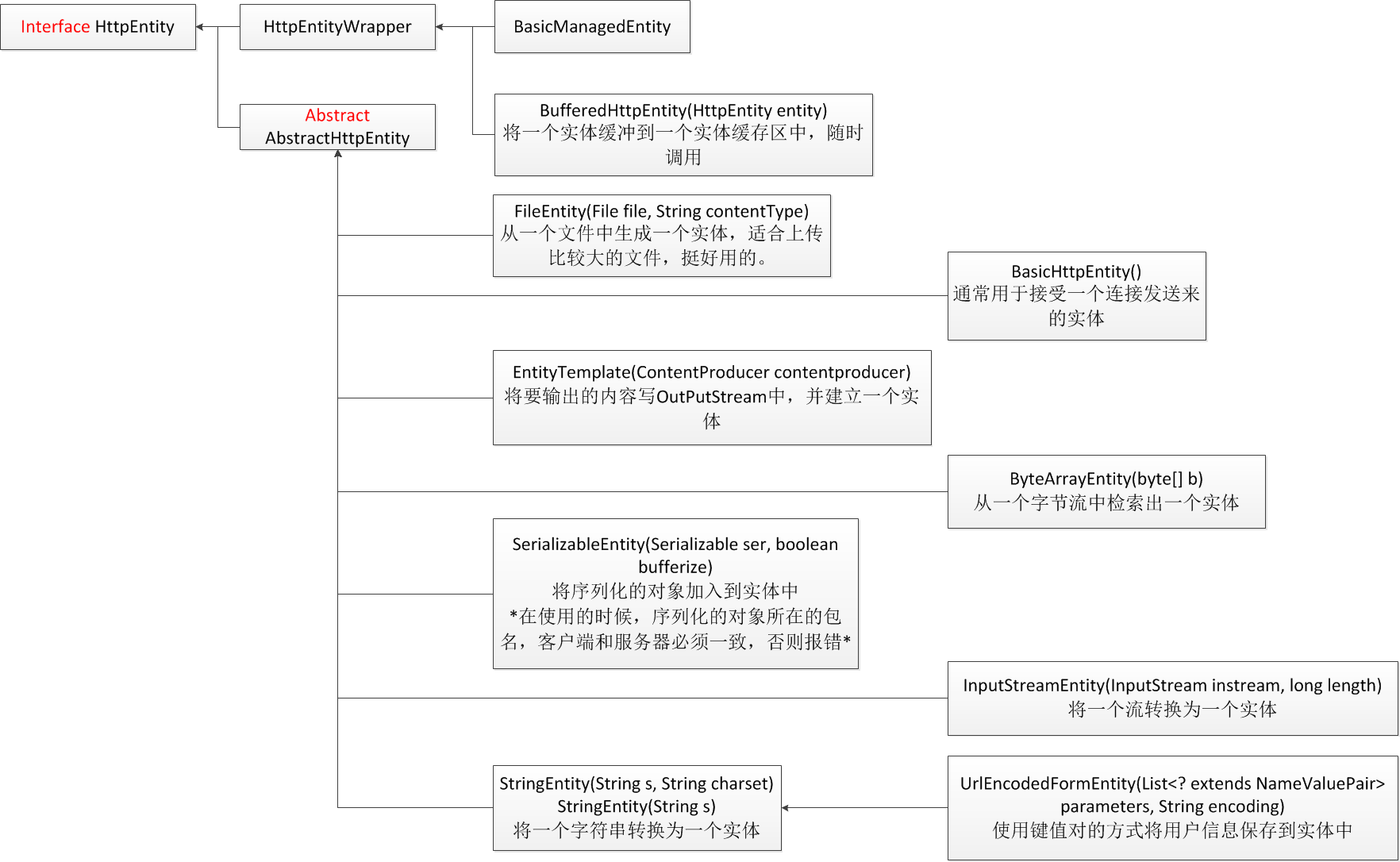httpclient post请求例子(无参数名与带参数名的例子),多线程并发处理
版本:4.1
- 带参数名的情况
HttpClient httpClient = new DefaultHttpClient();
HttpPost httpPost = new HttpPost(url); // httpPost.setHeader("Accept-Encoding", "gzip,deflate");//表示返回的数据是压缩的zip格式 String postParam = "";//请求的参数内容 List<NameValuePair> nvps = new ArrayList<NameValuePair>(); nvps.add(new BasicNameValuePair("data", postParam)); httpPost.setEntity(new UrlEncodedFormEntity(nvps,"utf-8")); HttpResponse response = httpClient.execute(httpPost); HttpEntity entity = response.getEntity(); if (response.getStatusLine().getStatusCode() == 200) {if (entity.getContentEncoding().toString().equalsIgnoreCase("Content-Encoding: gzip")) { response.setEntity(new GzipDecompressingEntity(response.getEntity())); //对zip进行解压 entity = response.getEntity(); } String responseContent = EntityUtils.toString(entity); System.out.println("responseContent: \n" + responseContent); } }
- 无参数名的情况
HttpClient httpClient = new DefaultHttpClient(); HttpPost httpPost = new HttpPost(url); // httpPost.setHeader("Accept-Encoding", "gzip,deflate");//表示返回的数据是压缩的zip格式 String postParam = "";//请求的参数内容 StringEntity paramEntity = new StringEntity(postParam);//无参数名,只是参数内容 httpPost.setEntity(paramEntity); HttpResponse response = httpClient.execute(httpPost); HttpEntity entity = response.getEntity(); if (response.getStatusLine().getStatusCode() == 200) {if (entity.getContentEncoding().toString().equalsIgnoreCase("Content-Encoding: gzip")) { response.setEntity(new GzipDecompressingEntity(response.getEntity())); //对zip进行解压 entity = response.getEntity(); } String responseContent = EntityUtils.toString(entity); System.out.println("responseContent: \n" + responseContent); } }
- httpEntity的类结构图

Httpclient并发处理处理:主要改变Httpclient对象的生成
/** * 适合多线程的HttpClient,用httpClient4.2.1实现 * @return DefaultHttpClient */ public static DefaultHttpClient getHttpClient() { // 设置组件参数, HTTP协议的版本,1.1/1.0/0.9 HttpParams params = new BasicHttpParams(); HttpProtocolParams.setVersion(params, HttpVersion.HTTP_1_1); HttpProtocolParams.setUserAgent(params, "HttpComponents/1.1"); HttpProtocolParams.setUseExpectContinue(params, true); //设置连接超时时间 int REQUEST_TIMEOUT = 60*1000; //设置请求超时60秒钟 int SO_TIMEOUT = 60*1000; //设置等待数据超时时间60秒钟 //HttpConnectionParams.setConnectionTimeout(params, REQUEST_TIMEOUT); //HttpConnectionParams.setSoTimeout(params, SO_TIMEOUT); params.setParameter(CoreConnectionPNames.CONNECTION_TIMEOUT, REQUEST_TIMEOUT); params.setParameter(CoreConnectionPNames.SO_TIMEOUT, SO_TIMEOUT); //设置访问协议 SchemeRegistry schreg = new SchemeRegistry(); schreg.register(new Scheme("http",80,PlainSocketFactory.getSocketFactory())); schreg.register(new Scheme("https", 443, SSLSocketFactory.getSocketFactory())); //多连接的线程安全的管理器 PoolingClientConnectionManager pccm = new PoolingClientConnectionManager(schreg); pccm.setDefaultMaxPerRoute(20); //每个主机的最大并行链接数 pccm.setMaxTotal(100); //客户端总并行链接最大数 DefaultHttpClient httpClient = new DefaultHttpClient(pccm, params); return httpClient; }



